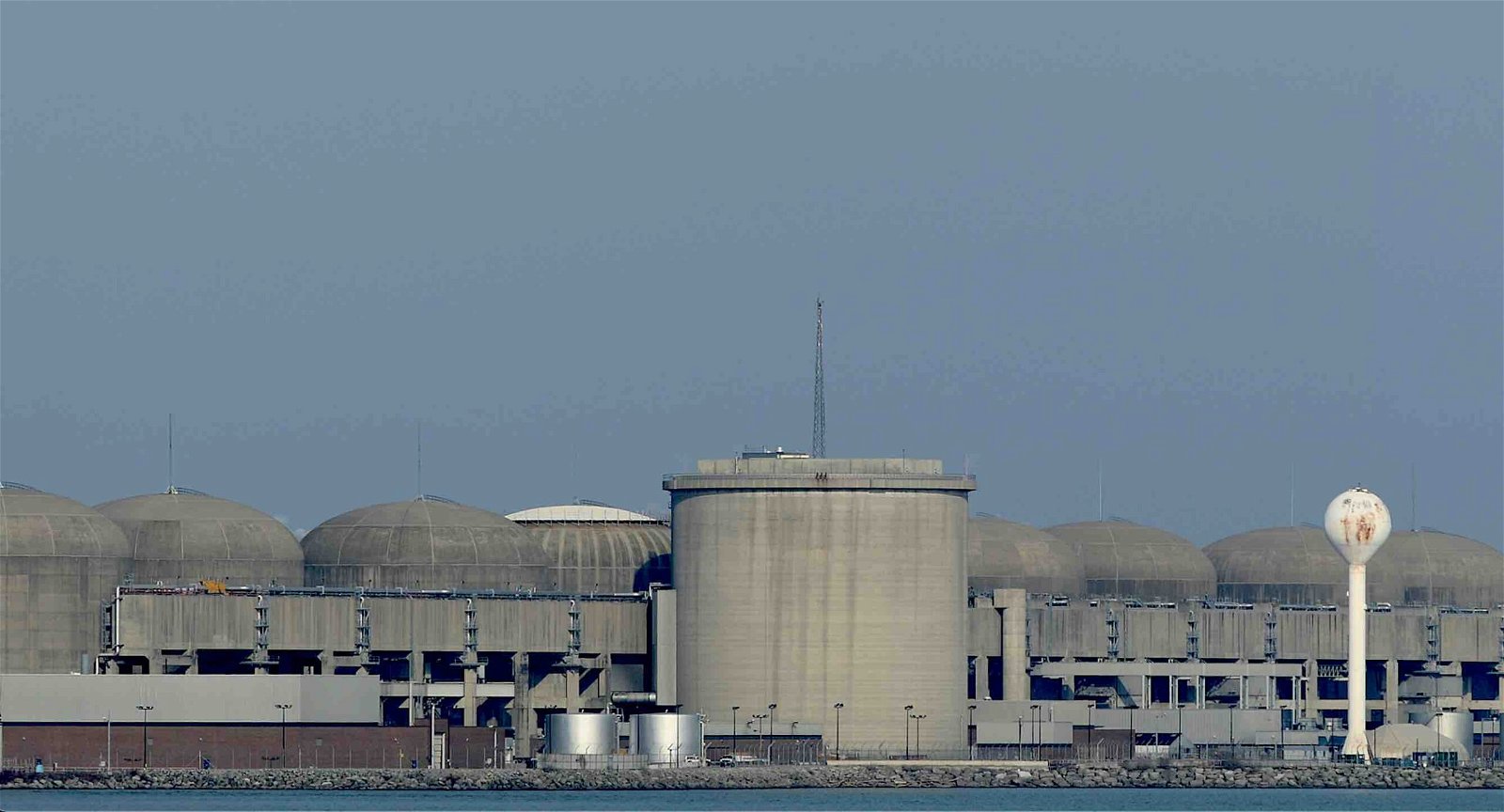Senior military and intelligence personnel have consistently reported the presence of Unidentified Aerial Phenomena (UAP) in proximity to locations linked to nuclear power, weaponry, and technology across the United States for the past 75 years.
However, the U.S. is not the only country in which unknown aerial objects have been observed, and sometimes close to sites of national security significance.
“Canadians report seeing UFOs in the sky at a rate of 3 times a day,” says Chris Rutkowski, a Canadian ufologist and media expert. “There are about 1,000 UFO reports filed in Canada every year, and the number remains high.”
However, amidst this extensive reporting of the phenomena, another question arises: where are the official Canadian records involving UAP observed near nuclear power facilities?
Now, The Canadian Constitution Foundation (CCF), a national and non-partisan charity with the mission to defend constitutionally protected rights and freedoms, is supporting a Canadian freelance investigative journalist, Daniel Otis, in his effort to appeal a decision made by Ontario Power Generation (OPG), involving the denial of access to records pertaining to UAP detected at or near nuclear power plants in Canada.
Daniel Otis’s UAP investigations, reporting on UAP activity, and social-political commentary on the topic have been extensively published in national outlets such as CTV News and Motherboard. Through his reports, Otis plays a vital role in enhancing Canadians’ understanding of how government agencies are addressing these enigmatic phenomena.
In support of his investigative work, Otis has submitted over 200 requests under federal and provincial freedom of information laws to various Canadian agencies, including the Department of National Defense, the Royal Canadian Mounted Police, and the Royal Canadian Air Force. Historically, these agencies have nearly always provided the records requested with information that poses a security risk redacted.
“For more than two years, I have used freedom of information requests to uncover case files, procedures, and briefing material about unidentified objects and lights in Canadian airspace,” Otis says. “While this might seem outlandish at first, I have obtained thousands of pages of relevant material, including 70 years of reports from Canadian pilots, soldiers, and police officers.”
Last year, OPG turned down Otis’s inquiry under Ontario’s Freedom of Information and Privacy Protection Act (FIPPA) for the supply of records concerning Unidentified Aerial Phenomena identified near Ontario’s nuclear power plants.
Otis launched the request based on an anonymous tip he received. Even though the existence of records was acknowledged, OPG initially refused to provide the copies, insisting on an exemption within FIPPA. This exemption states that records need not be disclosed if their revelation could reasonably be expected to seriously threaten an individual’s safety or health.
On March 2, 2023, during a meeting of the House of Commons Standing Committee on Natural Resources, Natural Resources Canada (NRCan) officials were asked by Committee Vice-Chair and Member of Parliament Larry Maguire if the government shared any information it had on UAP or drone reports from nuclear power facilities throughout the country.
“The CNSC can report that there have been no reported drone intrusions or attempted intrusions at Canadian high-security nuclear facilities,” wrote Kathleen Heppell-Masys, Director General Directorate of Security and Safeguards, in a response on March 11.
She added that “All CNSC licensees, including operators of high-security sites such as nuclear power plants and Chalk River Laboratories, are required as conditions of their licenses and under NSC regulations to report on any attempted or actual breaches of security, or attempted or actual acts of sabotage at their sites. This requirement applies to any actual or attempted intrusion of the facilities by ‘drones’ including autonomous, semi-autonomous, and remotely piloted aircraft systems.”
“The excessive secrecy is absurd,” House of Parliament Member Larry Maguire told The Debrief. “It is my sincere hope the Chief Science Advisor’s Sky Canada Project will include specific recommendations on how information can be released into the public domain for further study and investigation.”
“By making information publicly available, it will help scientists and researchers analyze the data and cross reference it with other open-source material. We also need to see a scientific plan and best practices the government could adopt,” Maguire said.
Maguire told The Debrief that he had made his own inquiries about UAP sightings near Canadian nuclear facilities, to which officials provided lackluster responses.
“When I originally asked questions about incidents near nuclear facilities at the Natural Resources Committee, it was clear the department did not have a plan on how to investigate occurrences. Even though the Deputy Minister, who is now the Clerk of the Privy Council, said they would be willing to work with their American counterparts, I have seen no information to suggest it is happening.”
“It should also be noted the department said they had no records of incidences, while OPG is now willing to go to great lengths not to comply with this access to information request.”
After Otis appealed the decision to Ontario’s Information and Privacy Commissioner (IPC), OPG raised several other dubious reasons that it cannot provide even redacted records. The reasons the cited include the constitutional division of powers, the federal Nuclear Safety and Control Act, and other related regulations.
However, OPG’s interpretation of the law is incorrect, as illustrated by the decision of New Brunswick Power, which is governed by the same constitution and federal regime as OPG, to provide Otis with records of UAP sightings at or near its nuclear plant.
“How many UAPs are associated with nuclear sites? It’s actually hard to say,” Rutkowski told The Debrief.
“I was asked a few years ago for a list of UAP near Canadian nuclear sites and it was quite long. But the problem is how to define a nuclear site and what does ‘near’ or ‘over’ one mean?”
One example Rutkowski gives is his Canadian UFO Survey, which he says now has almost 25,000 reports in it spanning more than three decades. “If we search the database for a specific location, such as Pickering, where a nuclear energy generating station is located, we get more than 50 reports! So in one sense, UAP are definitely associated with nuclear sites.”
“Since Pickering is near large population centers and is on an airline flight path, someone in southern Ontario who sees a UAP in the direction of Pickering might only see a light in the general area, not really directly over the nuclear site,” Rutkowski says. “The same is likely true for Chalk River, Bruce Point, etc.
“So, it might also be that UAP are only incidentally associated with nuclear sites.”
Rutkowski says that he has been told of security officials at nuclear sites that have observed unusual aerial phenomena, although such reports “are not routinely reported to me or to civilian organizations so it’s hard to say what they might be. I’d have to say that from experience, many would turn out to be misidentified aircraft or astronomical objects.”
“Nevertheless, I think that Otis’s requests should be given due consideration and that he should have access to UAP reports filed by security personnel working a nuclear sites,” Rutkowski said.
“Ontario’s freedom of information law is clear that the public has a right to access information from public institutions and exemptions must be limited and specific,” says CCF counsel Josh Dehaas.
“Mr. Otis has been more than reasonable in his request,” Dehaas adds. “He simply wants those parts of the documents that are not exempt from disclosure so that he can do his job and inform the public about the UFOs that have been reported at or near OPG’s nuclear plants.”
Presently, Otis is urging Ontario’s Information and Privacy Commissioner to order and oversee the release of redacted records in this case.
“Ontario Power Generation, a multi-billion-dollar provincial Crown corporation, has put the weight of their legal team into fighting my request,” Otis said.
“By simply redacting and releasing records, we could achieve a reasonable outcome that protects sensitive personal and security-related information while providing important data that researchers and the public can use to help unravel the enduring mystery of sightings like these.”
Requests for a comment were sent to Ontario Power Generation by The Debrief, but no responses had been recieved from the company as of the time of publication.
Chrissy Newton is a PR professional and founder of VOCAB Communications. She hosts the Rebelliously Curious podcast, which can be found on The Debrief’s YouTube Channel. Follow her on X: @ChrissyNewton Or chrissynewton.com.

